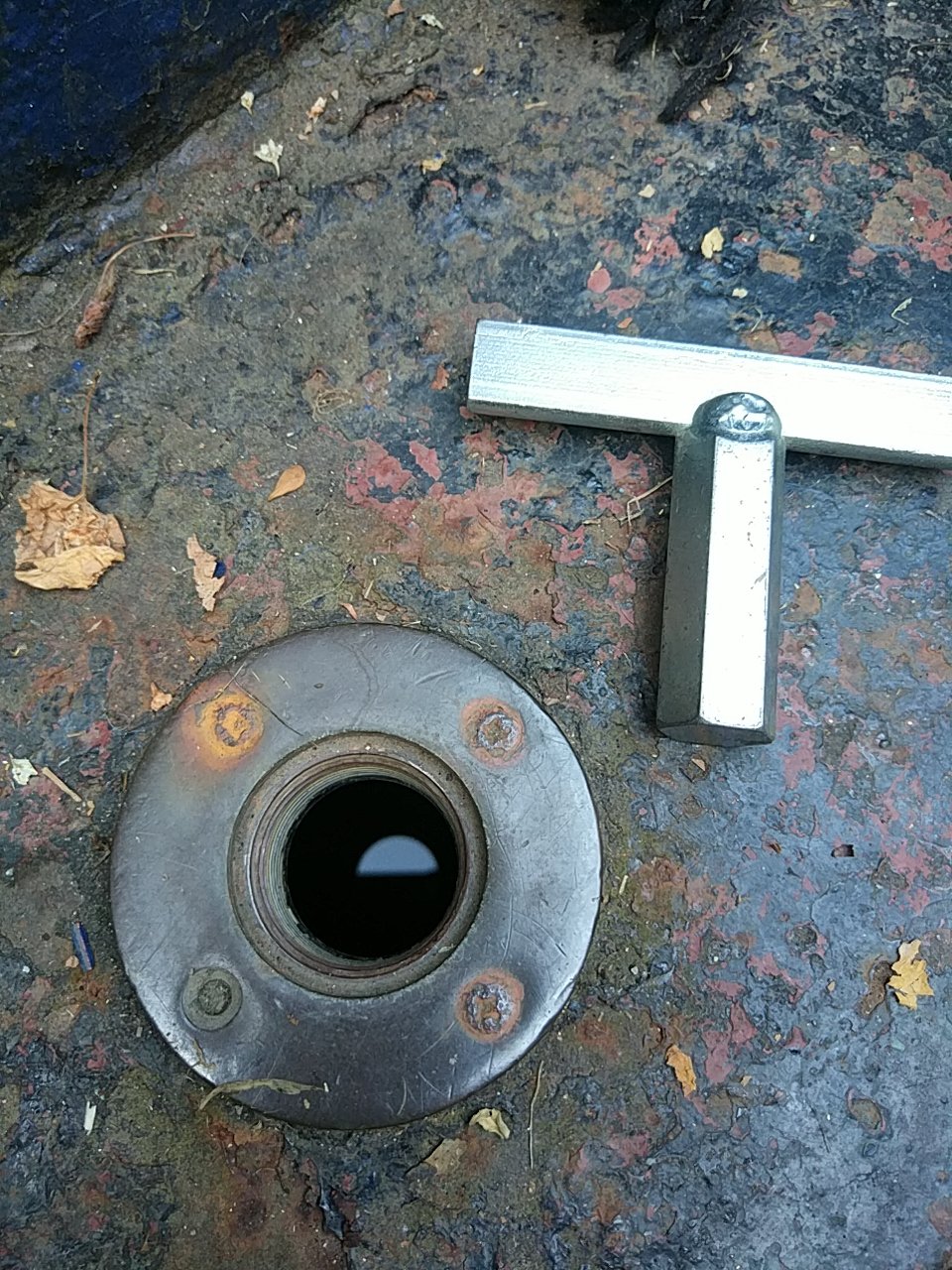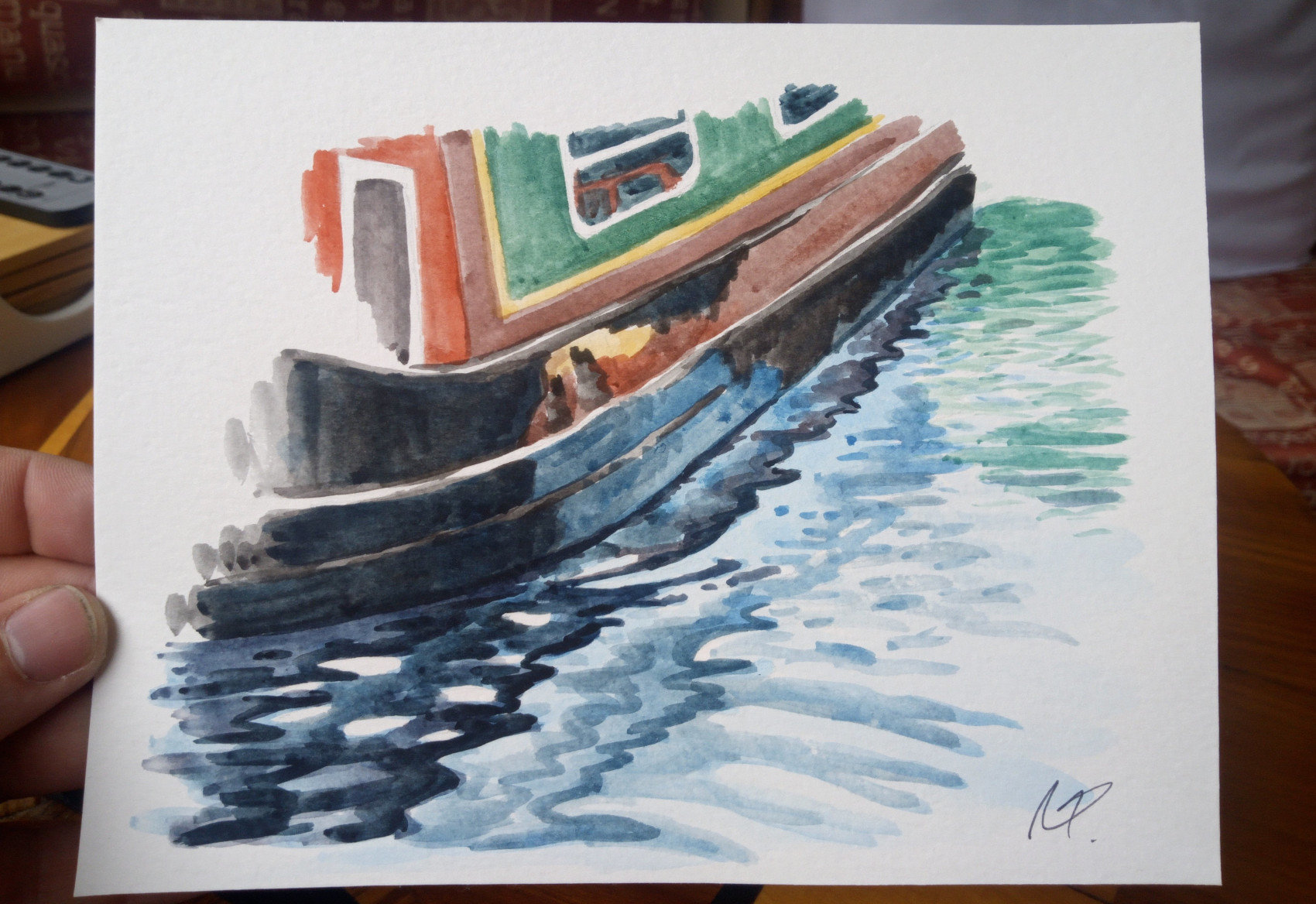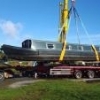Search the Community
Showing results for tags 'water'.
-
Hi Out of the blue we had no hot water on Sunday morning. We are moored in a marina and on shoreline with an immersion heater. No biggie, changed the fuse in case it was that but that didn't seem to fix it. We have had had someone out to change the immersion heater (he said a filament had gone?) but now - still nothing, It has been on for 9 hours at this stage so it should be hot. It gets hot for a few seconds when we first turn the tape on and then luke warm at best thereafter. We have tried running it for a really long time but - all we get is 15 - 20 seconds and that is it. Obviously will call them again when we can (Monday morning) but if there is anything anyone thinks we should be looking at in the meantime, I would appreciate it!
-
Hi I have a narrowboat built by Coalcraft. The watertank is steel not stainless steel. I empty the tank every September, October when I winterise the boat. In April when I wake the boat up the initial water from the tank shows signs of rust. The watertank is under the deck and gas locker at the front of the boat Has anyone else experience this? Has anyone got into the watertank to de-rust it and paint it? Thanks
-
Hello all! I have a Morco F11E water heater. Every time I start it all the flames ignite but go out either immediately or after a few seconds. It then tries to relight but only one or two flames will light around the ignition. In the relighting stage I can manually light all the others with a handheld flame. Seems to me there are two problems, the gas flow shutting down and the ignition failing to light fully after the first try. Any ideas? I've cleaned out the water filter and pumped up the accumulator and the water flow sensor stays on while running so i don't think it's a water pressure issue, more likely gas pressure? Thanks in advance!
- 9 replies
-
- morco
- water heater
-
(and 4 more)
Tagged with:
-
I have an in line MSC products water level gauge. It looks like this:- http://mcsboatproducts.co.uk/ I have the analogue meter. I thought at first my tank outlet was blocked but it looks like the gauge is showing half full when the tank is empty. So either the sensor is faulty of the gauge. Does anyone know of a simple way of testing these items or have any experience of common problems ? It has worked well up until a few days ago.
-
I've lost the hexagonal keyed metal water tank plug for our boat. (At the Bath Widcombe Lock Flight water point in the unlikely chance anyone has it!). Are these easily replaceable? How would I know widths, depths and thread pitch of the plug without trying to measure it crudely? It's a 1987 Colecraft. Any pointers well appreciated.
-
Watercolour on a piece of A5 watercolour paper. And painted on my boat with a Koi pocket set and waterbrush. Source photo is from The Tillergraph magazine.
-
As some of you may know the wife's foot went through the water pump dividing it nicely in half and causing a splash or two of water to threaten to sink the boat (exageration). Has anyone got any advice for how to change the water pump- turn off the water obviously- turn off the electricity supply (I'm guessing)? I also need to replace the front panel which appears to be leading from the bow onto the stair (where the water pump is). Heeelllpppp...
-
Hi all, For a while I've been toying with the idea of buying a narrowboat to continuously cruise along the London Canals, for a few weeks or so I've been doing a fair bit of research but for some areas I still haven't found the answers I'm looking for so thought I'd turn to you guys to see if you can help me out at all! Apologies in advance if some areas have been discussed already and also, if any of the questions sound silly... I really am a complete newbie to this... 1. As I mention - I'll be CC along the Canals in London, so have been researching what distance as I need to travel each week, obviously don't want to take the mick and want to stay on the right side of Canal and River Trust. However, their website isn't totally clear on how far - all I can see is that in a years licence, 15-20miles is expected, which seems more than fine. But how far is the minimum? Just for an example, say I started in Little Venice and was travelling East, how far would I need to travel to satisfy the Canal and River Trust for say one weekend I didn't want to travel 'that' far? 2. Which brings me on to my next point - as I read, each 14 days would be the time I top up water, which would top up my batteries (as I'm moving) and usually empty the loos out. May seem like a silly question but are these water points at regular intervals? Similarly, to electric points? (if I needed it half way) Also, are loo-emptying-places at regular intervals also? 3. Again, brings me on to my next point of water storage tanks and electricity batteries... my budget is around 25k and aiming for around a 40ft-er trad steel narrowboat so from what I've seen, many don't have a tank or seems quite small. If so, can this be retrofitted and to what cost? I understand becoming more frugal is all part and parcel of it (which I'm excited about) but for say a 10/15minute shower a day - what sort of tank should I be looking at to tide me over for two weeks? However, I guess this would hinge on question number two! In terms of electricity, I don't watch a lot of TV but would like to charge my phone, listen to music, have lights! Where should I even start with what to look for to tide me over 2 weeks again? 4. I guess this question is more to the nitty-gritty when I view but what are the main tips/points you'd recommend to look out for a bad conditioned narrowboat? Is there such a thing? Don't mind buying something that requires a bit of modernisation but in terms of 'behind the scene' stuff, what do I look for when looking at an engine? At the electric board? Heating system? Or should this all be taking care of at survey stage? Anyway, I think that's probably enough for now on my first post. I really would appreciate any tips/answers - no matter how big or small! Really excited to be buying - just need to get my head around it all first!! Speak soon, Nat
- 32 replies
-
- Buying
- narrowboat
-
(and 3 more)
Tagged with:
-
Hi folks Could you please take a minute to sign our petition.We would like to improve the facilities for all who use the beautiful river Nene. https://you.38degrees.org.uk/petitions/please-help-improve-river-nene-s-facilities?source=facebook-share-button&time=1422959109 Thanks Safe & happy boating The new website is now up and running :- http://www.friendsoftherivernene.co.uk/Articles/About-Us
- 9 replies
-
- River Nene
- dredging
-
(and 4 more)
Tagged with:
-
Hi all Kitchen refit is going well, I am changing my existing kitchen layout from a both sides "walk through" format to an "L" shape on the Port side. At the moment, I have 12v/240v/Gas under the gunnel on the Starboard side and 12v/240v/Water under the gunnel on the Port. Is there any reason why i can't have gas, water and electric all under the same gunnel? i'll leave a 12v and 240v loom under the starboard too. Any advice for doing this? Do the lines need to be isolated from each other? thank you! Jess
-
I have a grey plastic water tank situated under my front deck. I discovered a very slow leak in a joint in the plastic pipework coming from the pump in that area and that's now completely sorted out. However, I've noticed that the cupboard which houses the tank is still wet. On further investigation I've discovered that there is a small hole right on the top edge of the tank from which water squirts a fine spray when the tank is filled/full. Obviously I need to fix this PDQ. I can't get to actually see where the leak is coming from but I know roughly where the squirt comes out. I was thinking of using Fernox LX sealant, with perhaps a piece of right angled plastic profile over the area bonded on with the Fernox. Is there a better solution, bearing in mind that this water is used for drinking? I'd also really like a water gauge to see how full the tank is. Any recommendations here would also be very welcome. Many thanks for reading this whether or not you have any solutions!
-
I was trying to find a recent post about someone wanting to repaint the inside of their water tank, but slow internet today has caused me to give up. Anyway, a separate post might be more appropriate as what I am thinking of doing is turning my bow locker into a water tank. It has two tiny drain holes that would need welding up, (they are only 2-3cm above the water line btw) and I expect I could fit a screw down access plate with filler hole, under the lift up hatch (so keeping the appearance). Interestingly, the locker seems to have its floor at exactly water level, so I wonder if it means a bow thruster could be easily added underneath the portion towards the well deck? I digress. I could use the special paint on the inside of the locker. That or fit one of those bladder things. Ideally I'd fit a ss tank into the locker but it would waste a lot of capacity unless it was a special shape - though I could at least insulate it then. Getting it in through the hatch would be interesting. Pros and cons of this? I'm concerned about freezing in winter, and also wondering whether it would connect to the ss tank I have or if I would use a pump when the main tank is low, to transfer it through. My ss tank is I believe, 500l, the extra capacity could give me another 400 or 500l I reckon. I really need extra water for when I want to stay at a spot for the full 14 days without having to go into miser mode. Thoughts?
-

Water spurt then delay - what's the cause?
SilverComet posted a topic in Boat Building & Maintenance
Hi, After many plumbing issues (PRV, ruptured tank, pump being set too high) we've gotten our plumbing back to normal, that is until we tried the taps, at some point in the 2 month plumbing fiasco we've either gotten an air block or we've had something break. We have water when turning the tap for 1 maybe 2 seconds at what feels like full pressure, then nothing for 10 or 15 seconds till the pump kicks in. It's worth noting the lowering in pressure was weeks before our major issues and was working for a good 6 weeks before everything was turned upside down. Does anyone have any ideas? I've tried raising the pressure, it worked for about 10 minutes then it was back to before. -
Just wanted to share with you all one little victory today Finally fired up my washing machine. No leaks, nothing blew up. The machine ran well off the Victron inverter. It's a Bosch WFF2000 - I couldn't find details of its water/power consumption but it didn't seem to greedy according to my water gauge. I did have a problem with the power early on - the voltage to the inverter dropped to under 11v and a red light warned me of low voltage. This was with the engine idling, so I increased revs but to no avail - seemed for a moment as though I'd knackered the alternators output. But after switching off the machine, letting the batteries get a bit of charge then resuming the wash cycle at higher engine revs, things went ok. Just a question of learning how things like to be treated. I wonder why the alternator output dropped right off then came back though. Hopefully just a normal safety feature but it should be good for 175a which is ... a lot. (couple kw?) Maybe trying to supply the machine and the hungry batteries was just too much for it - I'll start with higher revs and/or better charged batteries next time, now I know. Still good though! Clean underwear
-
Hi, Just about to make a hole in the side of the boat. Looking at my other skin fittings, one is maybe less than 10" above the water line (well below the rubbing strake) one is above the rubbing strake. I'm plumbing a washing machine - read something about the hose needing to be higher than the top of the drum but not sure if its relevant in this case as no domestic waste to draw back old water from or anything like that. I'm tempted to make the whole a bit above the rubbing strake which is nice and high from the water outside... anyone know what's best?
- 9 replies
-
- skin fitting
- waste
-
(and 2 more)
Tagged with:
-
Hi, I've had a seaflo SFDP1 for about 2 years and in the last 2 weeks, it's decided to start overheating. Nothing had changed so I don't know what has caused it to start doing this. Pulled it apart, can't see anything obviously wrong. Turned the magnets round, checked the connection & checked pressure switch. It's getting extremely hot to touch, and really draining the batteries when it starts overheating (the lights dim considerably, and bathroom pump runs really slow when having shower, so I can tell it's putting pressure on batteries). Weird thing is, is that it has been intermittently working and not overheating! Does anyone have any ideas? Would appreciate any thoughts on this. Thank you.
-
I bought a canal boat about six months go, it is a 50ft rose cruiser stern canal boat, ex hire and has been extremely neglected over the years. Previously has been over plated. It has been surveyed and the surveyors are extremely happy with the thickness of the steel. Have had welding done, and have put a lot of love and energy into restoring this boat into a live aboard. Really need some help and advice to help me get to the finish line on this project. Whilst Grinding out and de-rusting my bilges inside the cabin of the boat i exposed two small holes of the old steel. Unfortunately the boat was flooded whilst in dry dock lol, and the hulls must have filled with water and now there is water trapped in-between the plates of steel on both the starboard and port sides plus the bottom. The boat is now on hardstanding, out of water but there is still water coming into the cab. When I jump up and down inside the boat I can hear the water sloshing around. The water has not been in there more than two months, but I am worried this may cause serious problems. Is this is a case of drilling into the gap and extracting the water or worse case scenario over plating again. Any help would be greatly appreciated, Thank you in advance, T.
- 28 replies
-
Hello Everyone, I have had to resort to a post about this as tonight I feel defeated !! after 2 months of battling with a leak in my engine room, I really thought I had it sussed ! - I have had various things to the calorifier done, including expansion tank fitted and all the joints re done, (plumer was doing some other work did this) - I have reseated the calorifier skin fitting with CT1 as I noticed this wasnt very good, - I then found a small hole near another pipe exit, where a spot of weld was missing and filled this with CT1 , really thought this was it. And yet still I find water, and a fair amount !! Alot of people say check the prop but I really dont think its this and I regularly twist the knob, but I am going to attempt to completely repack this at the weekend. For now I have put a bowl under it., I have taken some photos and even a video to try and show the issue and am desperate for some advice, I had the boat surveyed recently and he said everything was in very good conditon so am dubious to think its the hull itself leaking but starting to feel that way. I did run the eberspecher this morning for hot water and it rained lots today. I have a cratch cover and cannot figure it out ! I wondered if it was coming in through the vents but they dont seem wet ? Any help greatly apreciate, it may stop me going totaly mad. Thanks Martin http://www.martin-price.org/downloads/Engine%20Leaks/20160712_202756.jpg http://www.martin-price.org/downloads/Engine%20Leaks/20160712_202802.jpg http://www.martin-price.org/downloads/Engine%20Leaks/20160712_203654.jpg http://www.martin-price.org/downloads/Engine%20Leaks/20160712_203703.jpg http://www.martin-price.org/downloads/Engine%20Leaks/IMG_4504.JPG http://www.martin-price.org/downloads/Engine%20Leaks/IMG_4505.JPG http://www.martin-price.org/downloads/Engine%20Leaks/IMG_4506.JPG http://www.martin-price.org/downloads/Engine%20Leaks/IMG_4508.JPG http://www.martin-price.org/downloads/Engine%20Leaks/IMG_4509.JPG http://www.martin-price.org/downloads/Engine%20Leaks/IMG_4510.JPG Ps. sorry some of the photos are terrible, just home from work and tried to take the best I could on my phone with a torch, The video is a little better I hope
-
Since coating my fresh water tank with potable bitumen I have a brown contamination in the water. I have filled and emptied the tank many times and still have a residual brown tinge and an earthy smell especially from the hot side. I collected a sample and left it to settle, see picture. From an existing topic on water tank coating someone suggested an algae had formed. I put a water sterilizing tablet in the glass of sludge and it just made the sludge float. I am draining the tank down soon for winter. Can anyone suggest what I should do to sterilize the whole system.
- 5 replies
-
- water
- contamination
-
(and 3 more)
Tagged with:
-
Hi all, Hopefully someone knows the answer to this. I have an Eberspacher that heats a calorifier. I run the Eber for about an hour and we get a decent amount of hot water for showers. My issue is the amount of time it takes for the hot water to reach the taps. I measured it this morning and it took 12 litres of water before it turned warm. This is the same every time the first person wants hot water. Can anyone suggest why this would happen? The shower is quite close to the calorifier, just a bedroom in between, so I'm finding it hard to make any sense of why it takes the amount of time. Please help!
- 16 replies
-
- eberspacher
- hot
-
(and 5 more)
Tagged with:
-
Hey guys, I'm stuck! I have a Liverpool Boat from 2005 with an Isuzu Marine 35. I am so confused, I've been looking for the agglomerator for months, every now and again I go and take another look. It doesn't seem to be on the primary or secondary fuel filter and I can't see a tap or bolt that would be for this either. The filters are solid, no catch on the bottom. Could someone possibly tell me what I am missing. I'm not great with engines and I'm scared to mess this up. Cheers, Jamie
- 8 replies
-
- agglomeraor
- water
-
(and 3 more)
Tagged with:
-
Hi My water pump started playing up. That is, the flow was irregular and, as I have a Rinnai instant water heater, that meant taking a shower was either dodging the over-hot water or dodging the freezing cold water! Tonight, I removed the pump, took it apart, cleaned it up and re-installed it. But now it won't turn off! I recognise that there is a bit of an air-lock going on and I've had all taps open to try to release it. But that hasn't worked. I also think I understand that it will switch off when the back pressure is sufficient - have I got that right? But, I've left it running for a good 5 minutes or so, to allow the pressure to build up and it still doesn't turn off. Do I need to leave it running for longer or is my pump ready for the scrap heap? A new pump is only about £50 and I'm happy to pay that, but what if I have the same problem with the new one? Can anyone advise please? Cheers, Adam
-
Hi there, This is my first post so if you need clarifications, please ask. My girlfriend wanted a wooden floor on our Springer so I fitted a hardfloor that can be removed. A couple of months ago I noticed water remaining trapped between the floor and the wood panels. I thought it was condensation and checked all pipes. Everything was normal. Today I stripped the kitchen section and found a hatch. I removed thde "lid" ( a piece of wood with a hole) and found stones ( which I am assuming to be the ballards). The whole insert was covered by a inch of water. I removed some stones and noticed heavy flaking due to rust. I pumped out the water (hand pump) and now I am left with a dilemma: Do I need to remove all the rust, apply a rust converter, prime it and paint it? Am I risking by removing the rust? Boat is a V shape, completely overplated 3 years ago to top standards.
-
My water pump often takes ages to pump water through., i have checked the system for leaks, added a compression tank and still the problem persists. there is no way to adjust the pressure on the pump. the pump is not that old and the problem has been going on pretty much since i first installed it. Do you think i just have a faulty pump or i need a hight power pump?
-
Hi. I've recently started a new blog on wordpress.com and have had great success with it. I've had around 200 views in the first few days of the blog, but am now struggling for material to write about. The blog is called Canal Works and Nature, the URL is - http://www.canalworksnature.wordpress.com . I would be ever so greatful if anyone could give me a few ideas on what to write about, or any opinions on the stuff I have already began. Cheers











